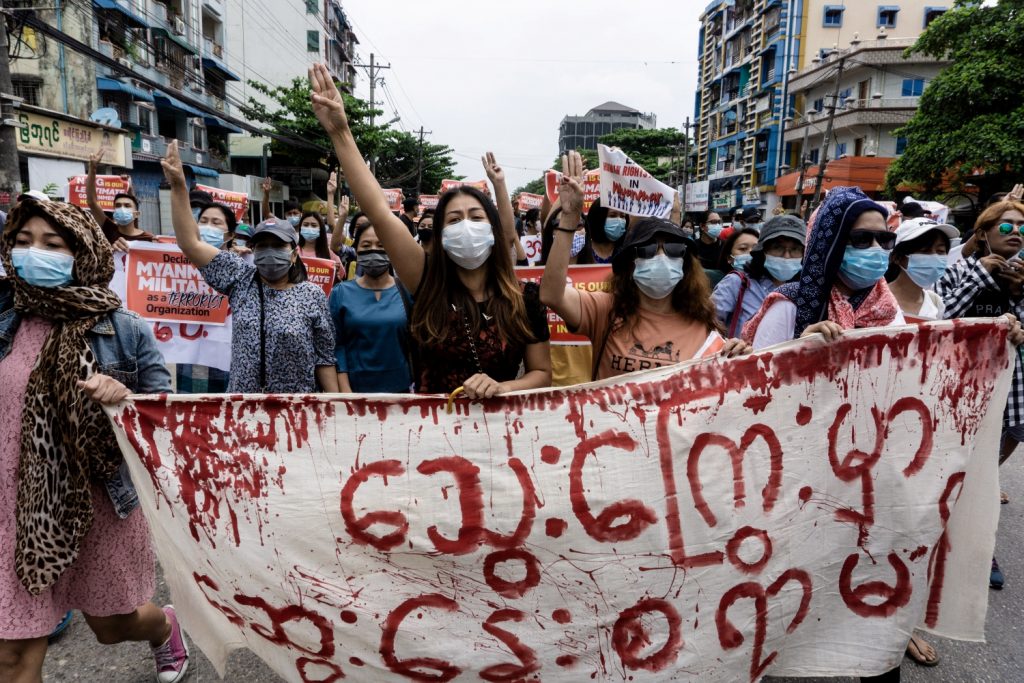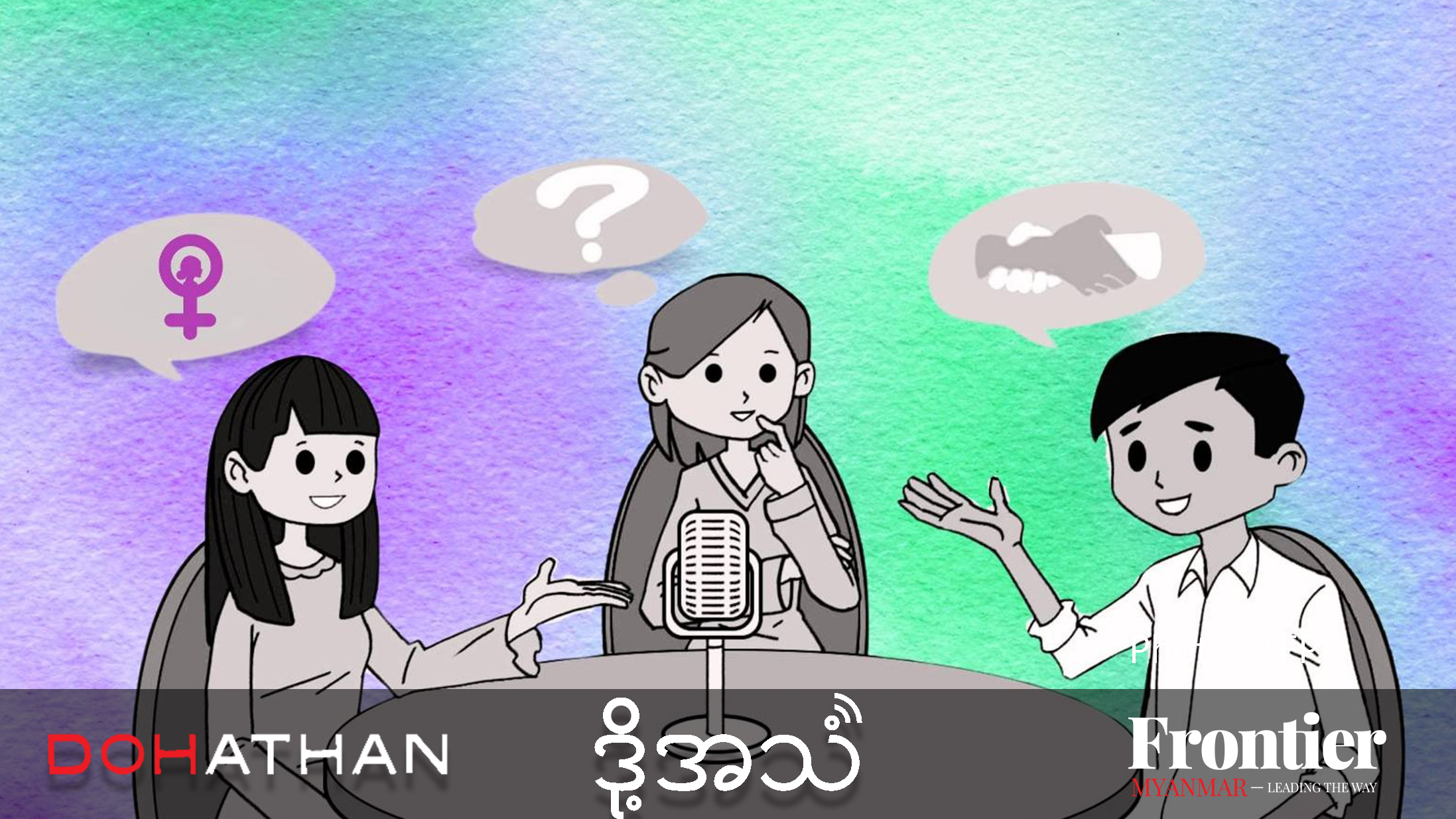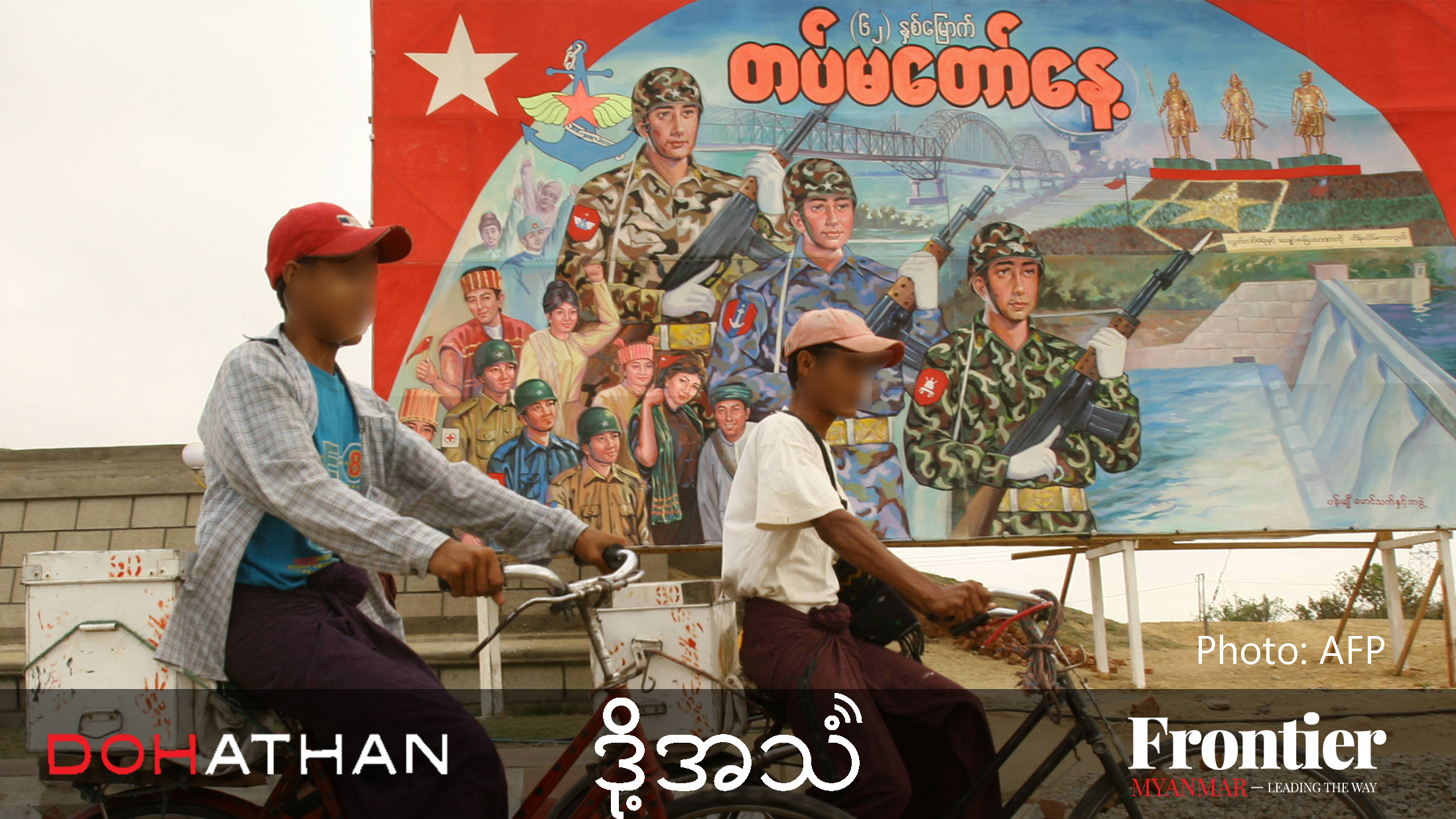While the anti-coup movement is ostensibly about who rules – the military or the people – embedded in it are four tendencies that, with the world’s help, will radically remake Myanmar society for the better.
By ZWE MAHN | FRONTIER
Myanmar is in the throes of a profound political crisis, but the solution must extend beyond the question of who’s in charge of government.
The resistance to the Tatmadaw’s takeover has been spearheaded by the youth. Members of so-called Generation Z have learned from their elders in the 1988 pro-democracy movement, but this “Spring Revolution” is not like their parents’ failed revolution.
The battle is lopsided – the military has more guns and more money than the people right now – but, with action from the international community, it is entirely winnable. The prize will not only be democratic government, but a far more just, inclusive and united society, thanks to four progressive tendencies embedded in the youth-led movement.
Genuine democracy
The first of these tendencies is a demand for genuine democracy that moves beyond past compromises. The events of the past three months mean the masses are no longer willing to settle for a return to the pre-coup status quo. This revolution aims to complete, once and for all, a process stalled since 1962: the creation of a federal union and the removal of the Tatmadaw from politics.
Many people reluctantly accepted the military-drafted 2008 Constitution because they believed it would help move the country towards democracy. The National League for Democracy’s 2015 victory under that charter gave them hope for a better future.
The military unequivocally dashed those hopes on February 1. Those that weren’t already convinced now know that a “partial democracy” is a contradiction of terms, and that a power sharing agreement with the Tatmadaw is a road to nowhere.
To that end, people are striking, peacefully protesting, boycotting and performing acts of civil disobedience, hoping to paralyse the military’s ability to govern, even if it means deep personal and economic pain. They are now considering any means necessary to finally remove the military from politics. They’ve called on the international community and the United Nations to invoke the principle of the Responsibility to Protect and, despite the slim-to-zero chance that this call will be heeded, they continue collecting evidence of the Tatmadaw’s crimes against humanity, hoping to hold the coup makers accountable under global bodies of justice, such as the International Criminal Court.
Even the idea of armed revolution has become popular, with the National Unity Government declaring its ambition to establish a People’s Defence Army that would later be integrated into a “federal army” alongside ethnic armed groups already fighting for autonomy in their own states. Young people are reportedly flocking to areas under the control of ethnic armies to receive weapons training.
But the idea of an armed offensive against the Tatmadaw, however emotionally gratifying now, may be ill advised in the longer term. For one, the military has superior weapons and greater resources than all of its challengers combined, and it has survived countless armed insurrections since its founding. Additionally, the technical and practical challenges of unifying many geographically dispersed armed groups with varying political goals into a single force may prove overwhelming.
Still, the growing popularity of the idea among young and old alike – many of whom are getting a first-hand experience of the depths of the Tatmadaw’s brutality and inhumanity for the first time – is a testament to the desperate desire, shared by almost everyone, to rid the country of this notorious institution, which has impoverished its citizenry and tarnished the national image for more than half a century.
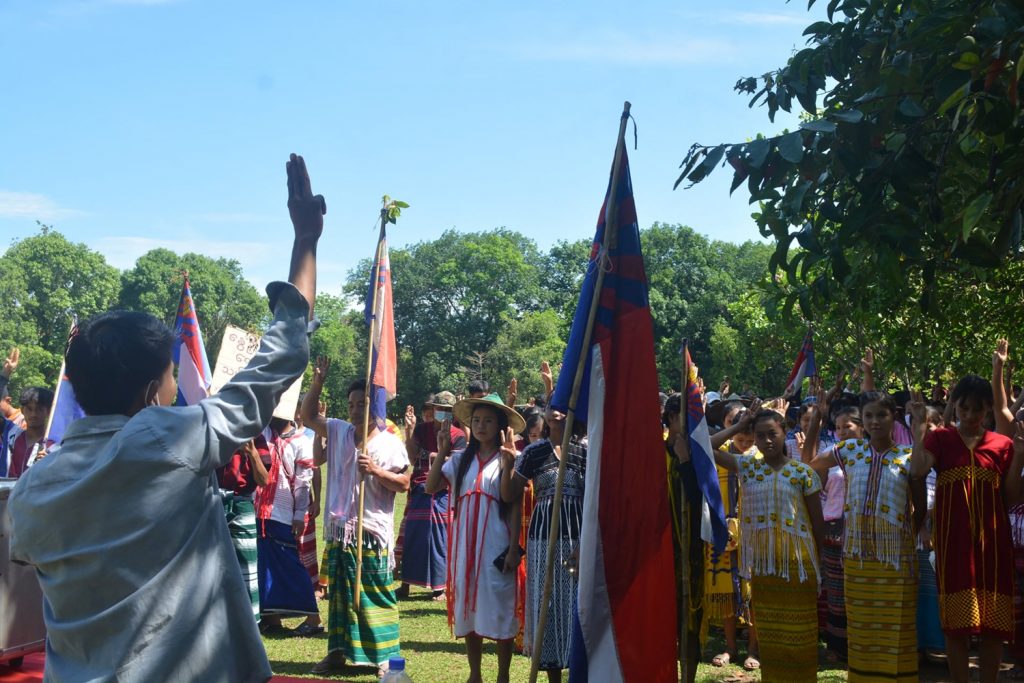
Across ethnic lines
The second critical tendency of the Spring Revolution is a desire to shatter pernicious national mythologies. Generations of Myanmar people have been conditioned to believe a distorted version of history – something this movement is helping to right.
For more than 70 years, minority ethnic groups have felt betrayed by the majority Bamar, who, instead of bringing about the democratic federal union promised in the 1947 Panglong Agreement, have continued to maintain their political and social dominance while marginalising minority voices. The military has systematically reinforced these divisions since General Ne Win seized power in 1962 through divide-and-conquer tactics. In propaganda spread through the schoolroom and state-controlled media, successive military regimes portrayed ethnic insurgent groups as bandits led by warlords who posed a threat to the nation.
Most Bamar live in regions untouched by conflict and did not understand that ethnic armed groups had taken up arms as political actors with the universal ambition of autonomy. They had little knowledge of the suffering and abuse – the abductions and arbitrary killings, the use of systemic rape as a weapon of war and subjugation – that ethnic groups have endured at the Tatmadaw’s hands.
Perhaps the most significant result of the Spring Revolution is the unprecedented unity that has developed between the Bamar and other ethnic nationalities. The use of lethal force by security forces – their indiscriminate shooting into homes and apartments, their targeting of aid workers, their looting and wanton vandalism – have helped lowland Bamar understand what their ethnic compatriots have endured for decades. Moving displays of Bamar sympathy have sprung up, and people – largely the youth – are publicly apologising for not speaking out in the past.
Toppling taboos
A third tendency of the Spring Revolution lies in its critique of religious orthodoxy and antiquated social norms. This is particularly noticeable in attitudes towards women and girls, who have been central to the protest movement, displaying just as much commitment, creativity and courage as their male counterparts – both on the frontlines and in the rooms where strategy is made.
Women have harnessed traditional beliefs to challenge misogyny and the military in creative ways, notably using the fear among many men – particularly those within the Tatmadaw – of losing their male essence, known as hpone, by passing below women’s garments. As security forces moved in to quash protests around the country, female-led groups of demonstrators hung women’s htamein (longyi) from clotheslines strung over streets and roads, knowing that superstitious, conservative soldiers would be reluctant to pass beneath them. In many cases, they were right. Junta forces often stopped to burn the garments before passing beneath them. The demands for gender equity have permeated aspirations for new government leadership as well: about half of the National Unity Government members announced on April 16 are women.
And despite the enormous respect accorded to senior Buddhist monks, young protesters have been quick to criticise monks who express support for the coup makers. After Wazipeik Sayadaw, a Shan State monk with close ties to junta chief Min Aung Hlaing, reportedly advised the senior general to “shoot protesters in the head”, portraits of the monk turned up strung alongside htamein at protests in Yangon’s Sanchaung Township. This was a challenge to the monk directly, but also to a misogynist belief that even representations of monks are too sacred to be displayed near “lowly” women’s clothing.
When Sitagu Sayadaw, a highly influential senior monk in Sagaing Region well known for his philanthropic work and Buddhist scholarship, publicly supported the coup, scores of Buddhist social media users were quick to post scathing criticisms of him online.
Western readers, accustomed to open critiques of the clergy, may find this nothing to write home about. But these moves – which even parents, senior relatives and religious leaders that do support the movement likely found deeply uncomfortable – are unprecedented, given the hierarchical relationship between laypeople and the Sangha. This revolution is changing mindsets: formerly untouchable elders are being revaluated with a critical eye, often facing social punishment campaigns from young people willing to judge them on their actions rather than their venerated status.
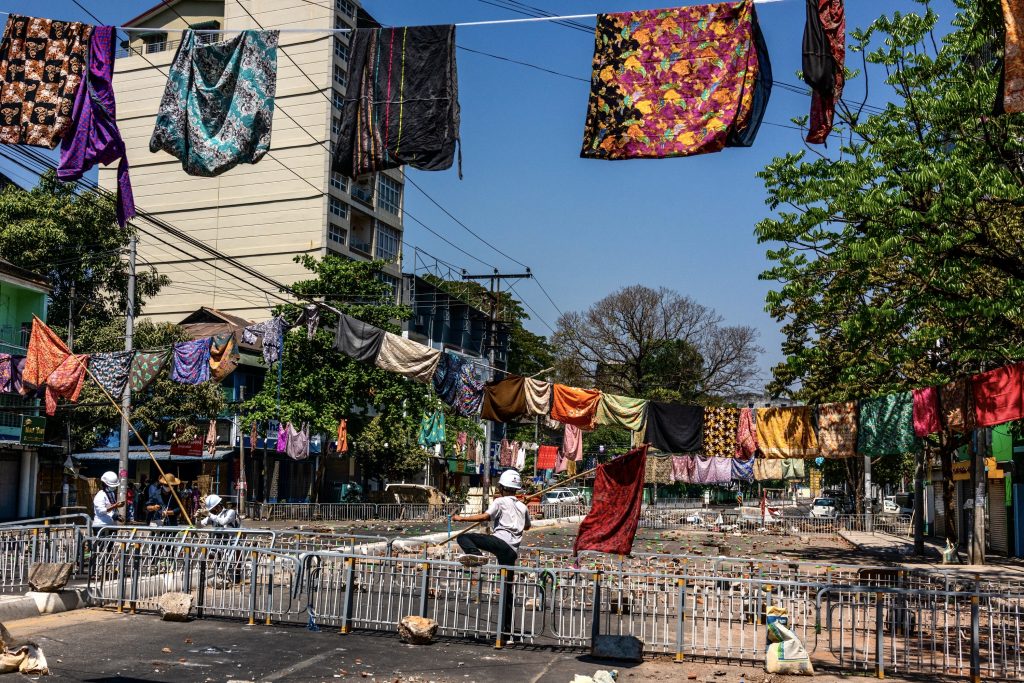
The Rohingya divide
The final tendency of the Spring Revolution may also be its most complex. This movement has, like nothing before it, forced a reckoning with longstanding prejudices against the Rohingya – though there are gradations to how much progress has been made in this realm.
Undoubtedly, there has been a much-needed growth in acceptance of the persecuted minority, and an overdue recognition of their plight. Social media users have tweeted what seemed like heartfelt apologies to the former United Nations special rapporteur on human rights in Myanmar, Ms Yanghee Lee, for their past hate speech against the Rohingya “and against me personally because I used the name ‘Rohingya’ while speaking about their plight”, Lee recently wrote in Nikkei Asia. Such apologies were “unthinkable just a few months ago”, she added.
Early on in the protests, multiple demonstrators posted photos of themselves holding signs expressing support for the Rohingya, and remorse for ignoring or denying their suffering in the past.
But while unity has emerged on abolishing military dictatorship, standing with ethnic nationalities, and building a more progressive, open society, divisions remain over the Rohingya, with opinion roughly divided into four groups.
The first still regards the Rohingya as illegal immigrants with no real right to a dignified life in Myanmar, insisting on calling them “Bengali” no matter how they self-identify, or how many generations have lived here before them. People of this mind may never be convinced.
The second acknowledges that the Tatmadaw committed crimes against humanity and possibly even genocide against the Rohingya in northern Rakhine State in 2016 and 2017, but still holds that most Rohingya are foreign interlopers who are not entitled to live in Myanmar. Most among this tribe also refuse to recognise “Rohingya” as a legitimate ethnic designation.
The third recognises the atrocities the Rohingya have suffered at the hands of the Tatmadaw and also accepts that many have lived in Myanmar for generations, entitling them to some form of citizenship, but only a second-class, “Bengali” citizenship, since they are not among the 135 indigenous “races” who automatically receive citizenship under the racist, military-drafted 1982 Citizenship Law.
The final group is, sadly, likely to be the smallest in size. This group accepts the Rohingya’s right to citizenship and to self-identification as “Rohingya”. These thinkers reject the arbitrary distinctions between “officially recognised” groups and others – ideas pushed on the populace by the xenophobic Ne Win, the country’s first coup maker and military dictator. They insist that Myanmar should have only one category of citizenship, free of racial distinctions.
Until this last understanding is more widely shared, we’re doomed to spawn a crippled form of democracy.
Towards a more just future
This revolution is truly unprecedented, in its demands and its sophistication, and it has the potential to transform society and deliver a new nation of more just structures, values and norms. We are confident of victory, but it will take perseverance.
More than 750 people have been killed by junta forces, according to the Assistance Association of Political Prisoners. Despite the rising death toll, people remain undaunted. When soldiers crack down in the daytime, they hold candlelight vigils at night. Instead of confronting security forces head on, people are finding new ways to resist, such as with sticker campaigns and quickly dispersing flash mobs. Civil servants and critical private-sector workers are refusing to return to their jobs, shuttering banking and payment services, hospitals, rail travel and cargo movement. Military-made products like Myanmar Beer and Red Ruby cigarettes have been targeted for consumer boycotts, tanking these brands and draining the Tatmadaw of revenue. The forms of resistance keep multiplying.
Just how long it will take may depend on the international community. Each day that justice is deferred, more will die. The movement’s goals are deeply aligned with the values and prerogatives that most Western nations espouse. If these nations can replace empty admonishments with serious moves against the Tatmadaw’s funding – more robust sanctions on extractive industries, for a start – we may be able to realise the more just future we all strive for sooner rather than later.
Zwe Mahn is the pseudonym of a Myanmar writer and journalist


